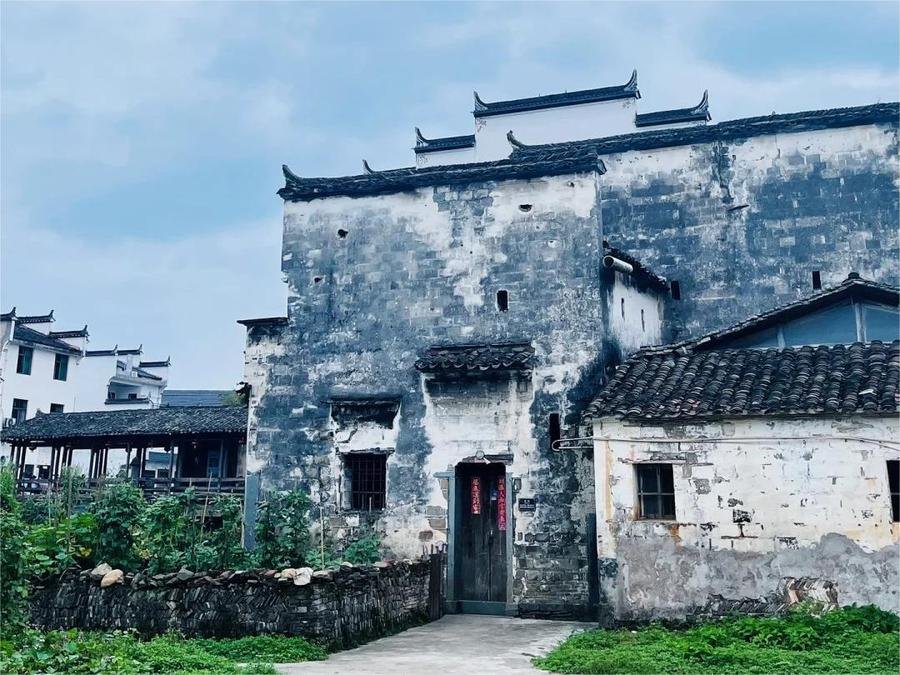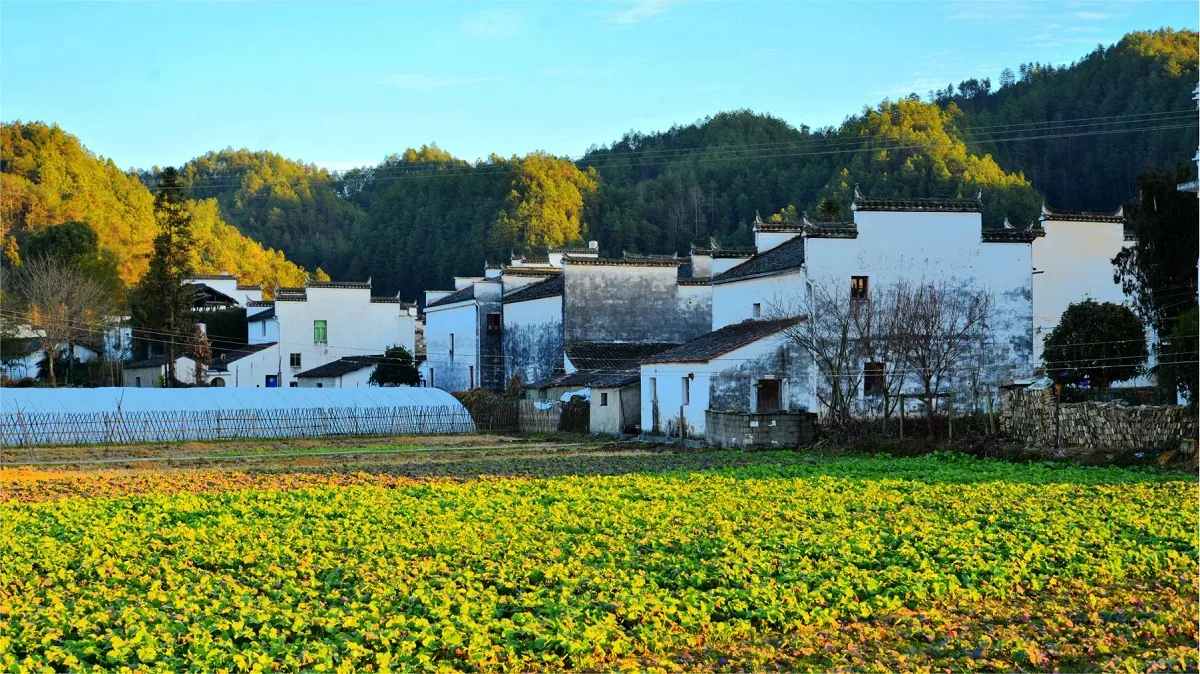Sixi and Yancun Villages (思溪延村) are located in Wuyuan County, Jiangxi Province. Established in the fifth year of the Southern Song Dynasty’s Qingyuan era (1199), these villages have a history spanning over 800 years. The villages were founded by the Yu family, who named Sixi after their longing for the clear streams (represented by the character for “fish” in Chinese).
Over the centuries, villagers engaged in commerce across Jiangxi, Zhejiang, Shanghai, and even Hunan and Guangxi, primarily dealing in timber, tea, and salt. Many who achieved wealth through business returned to their hometowns, investing in land, building houses, and establishing academies. This led to the creation of numerous grand mansions, ancestral halls, and stone archways.
The villages are predominantly composed of Ming and Qing dynasty architecture. The streets are paved with bluestone slabs, and the ancient buildings are set against a backdrop of green hills, clear streams, and rice fields, creating a harmonious blend of village life and natural beauty. Between the two villages lies a large field of rapeseed flowers, which bloom spectacularly in spring.
Currently, Sixi and Yancun have 172 households with a population of 667 people, covering an area of approximately 8.6 hectares. There are 156 ancient residences, including five from the Ming Dynasty and over 80 from the Qing Dynasty. The existing ancient buildings cover about 16,000 square meters. Most of these residences feature white walls and black tiles, characteristic of traditional Chinese architecture.
Table of Contents
- Basic Information
- Location and Transportation
- Highlights of Sixi and Yancun Villages
- Vlog about Sixi & Yancun Village
- Other Attractions in Wuyuan
Basic Information
| Estimated Length of Tour | 1 – 2 hours |
| Ticket Price | 55 RMB |
| Opening Hours | 7.30 – 18.30 |
| Telephone Number | 0086-0793-7410999 0086-0793-7336071 |
Location and Transportation
Sixi and Yancun Villages are located in the Sikou Town area of Wuyuan County, Shangrao,Jiangxi Province, approximately 13 kilometers from the county seat, Ziyang Town. To get there, you can following the following steps:
- From Wuyuan New Bus Station: Take a bus heading to Sikou (思口). The journey takes about 45 minutes.
- Arrival: Alight at the roadside and walk for about 5 minutes to reach Yancun Village.
- From Yancun to Sixi: Walk approximately 500 meters along a stone-paved path through the fields to reach Sixi Village.
Highlights of Sixi and Yancun Villages
Congting Hall (聪听堂)

Congting Hall, a renowned scholarly residence in Yancun, was built during the Qianlong reign by the ancestors of the famous Huizhou merchant Jin Jiazao. The hall retains its ancient charm and significance. Jin Jiazao had ten sons, earning the family the moniker “Ten Families of Jin.” This prosperous family produced many scholars, officials, and merchants, often interacting with renowned Confucian scholars. The hall still houses a plaque inscribed by Yao Ding, a famous Confucian master and leader of the Tongcheng School from the Qianlong period. The House features a two-courtyard, three-bay structure, with an entrance leading to a front yard. On the right side of the yard is the main gate, and on the left is the wood gate. The central area is the main entrance to Congting Hall, adorned with polished brickwork, elaborate brick carvings, and eaves with upward-curving tips.
Mingxun Hall (明训堂)

Mingxun Hall, a three-building complex, is often referred to as Yancun’s “Qiao Family Compound.” Its owner, Jin Yongqiu, was a prominent Huizhou merchant representing Yancun. In Guangzhou, Jin Yongqiu befriended Zhan Shiluan, the grandfather of Zhan Tianyou, China’s famous railway engineer. Together, they conducted business with foreigners through the Thirteen Factories in Guangzhou. Their enterprise was so successful that the British Empire, known as the empire on which the sun never sets, began to favor fragrant Wuyuan green tea over coffee every morning.
Yuqing Hall (余庆堂)

Yuqing Hall, an ancient house built during the Qianlong period of the Qing Dynasty, belonged to Jin Wenjian, a major tea merchant. In feudal society, despite their wealth, merchants were considered lower in status compared to scholars, farmers, and craftsmen. Therefore, their residences could not be as grand or luxurious as those of officials or royalty. Additionally, the government regulations of the time prohibited merchant houses from having their main gates facing directly south. The design of Yuqing Hall cleverly reflects its commercial heritage. The entire facade of the house is shaped like the Chinese character for “merchant” (商). The gatehouse and gate tower form the top part of the character, while the blue stone gate frame represents the “mouth” (口) part, and the outer blue brickwork completes the “door” (门) part of the character.












Sixi Yancun is in full bloom, with delightful aromas that attract many little bees.
Today’s private car route includes Sixi, Yancun, and Zhangcun. The rapeseed flowers in the villages are blooming beautifully, and everywhere is adorned in golden yellow.
We originally planned to stay in Wuyuan, but due to the large number of people, we decided to find a smaller village nearby for an overnight stay. To our surprise, it was so comfortable that we stayed an extra night. We arrived at 6 PM, and there was no entrance fee; they also don’t charge before 8 AM the next morning. The village is quite small and not overly developed. The carved railings at the bridge are still intact, and… Read more »
In the morning after sunrise or in the afternoon before sunset, the sunlight filters through the tree trunks and shines on the path. The leaves are a brilliant golden color, making for incredibly stunning photos.
Sixi Yan Villages is located about ten kilometers away from Wuyuan County. It’s easy to take a taxi there, but getting a taxi back to the county can be quite difficult. The area comprises two villages; Sixi Village is richer in cultural heritage. The entrance ticket is 55 yuan, but I personally feel that the price-to-value ratio is not very high.
Sixi Yancun consists of two villages, Sixi Village and Yan Village, which are about a kilometer apart. To be honest, if I hadn’t had some extra time on my way back to the county town and didn’t buy a combined ticket, it wouldn’t have been worth the visit. They’re just two ordinary rural areas with some traditional Hui-style architectural buildings.